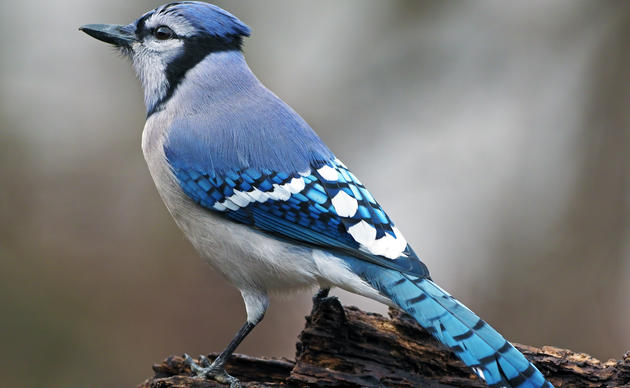Plantings for Spring Migrants
Insect-eating birds
In spring, many migrant birds, especially those from the tropics, eat insects, spiders and worms. In fact, that’s what lures them up from the south. Some eat the kind of tiny critters that are found on tender, emerging leaves - caterpillars, scale insects, mites and the like. Some eat flying insects that are attracted to blooming flowers, especially on trees. Others catch their meals on the wing; still others dig in the ground, or under bark for eggs and grubs. For simplicity’s sake, all these are referred to as insect-eating birds.
The tiny insects that these birds eat use native plants. The insects evolved knowing how to find and eat these plants just as the birds evolved knowing how to find and eat them.
The big movement of migrants begins in mid-April and continues through the end of May. Trees and shrubs which leaf out or flower during this period will fill with insect-eating birds such as warblers.
Oaks - especially bur oaks, are used the most by our birds. Their tender leaves are emerging just as the big wave of migrants comes through in early May. Hawthorns and elms have also been proven by local studies to be bird favorites. Hickories (such as bitternut), hackberry, honey locust, crabapple, prairie willow and pussy willow are some others.
Fact: oaks support many more species of butterfly and moth larva (which birds love to eat) than any other trees- more than 530 different species.
Open compost heaps and brush piles are also great places for insect-loving birds to explore
Nectar and sap drinkers
A small group of birds get nectar from flowers, mostly those in trees. Many of the nectar-loving birds pass through in early May, when flowers are emerging.
Hawthorn, Ohio buckeye, crabapple, cherry. Cultivars of cherries that flower between May 3 and 15 attract hordes of nectar drinking migrants such as orioles, and Cape May warblers, and put on such a show that you might want to consider one, even though they are not native.
Hummingbirds: Plant wild columbine, penstemon, paintbrush, Virginia bluebell, fire pink, woodland phlox in large groupings to best attract them.
A woodpecker, the yellow-bellied sapsucker, migrates through in April and drills holes in trees for sap. Some birds that come north after the sapsucker such as the hummingbird and the red-breasted nuthatch will visit these little wells to drink sap. Sugar maple (as you might expect) and birch are favorite trees.
Birds that search on the ground
Some birds love to scratch around in dead leaves for insects, worms and seeds. Towhees, woodcocks and fox sparrows will all appreciate areas under trees and shrubs where the leaves have not been raked up.
Birds like native sparrows will eat last fall’s seeds during migration, if zealous landscapers haven’t dead-headed the plants. Many seed-eating birds switch to leaf buds and insects during the seasons when they are abundant.
Birds that eat buds
Many birds that eat seeds in the fall, such as finches, grosbeaks and sparrows, enjoy eating buds in the spring. Elm, river birch, hop hornbeam and fruit trees have some of their favorites.
Ways You Can Help
Join A Chapter
Audubon chapters create a culture of conservation in local communities through education and advocacy, focusing on the conservation of birds and conservation of important habitats.
Donate to Audubon
Help secure the future for birds at risk from climate change, habitat loss and other threats. Your support will power our science, education, advocacy and on-the-ground conservation efforts.




